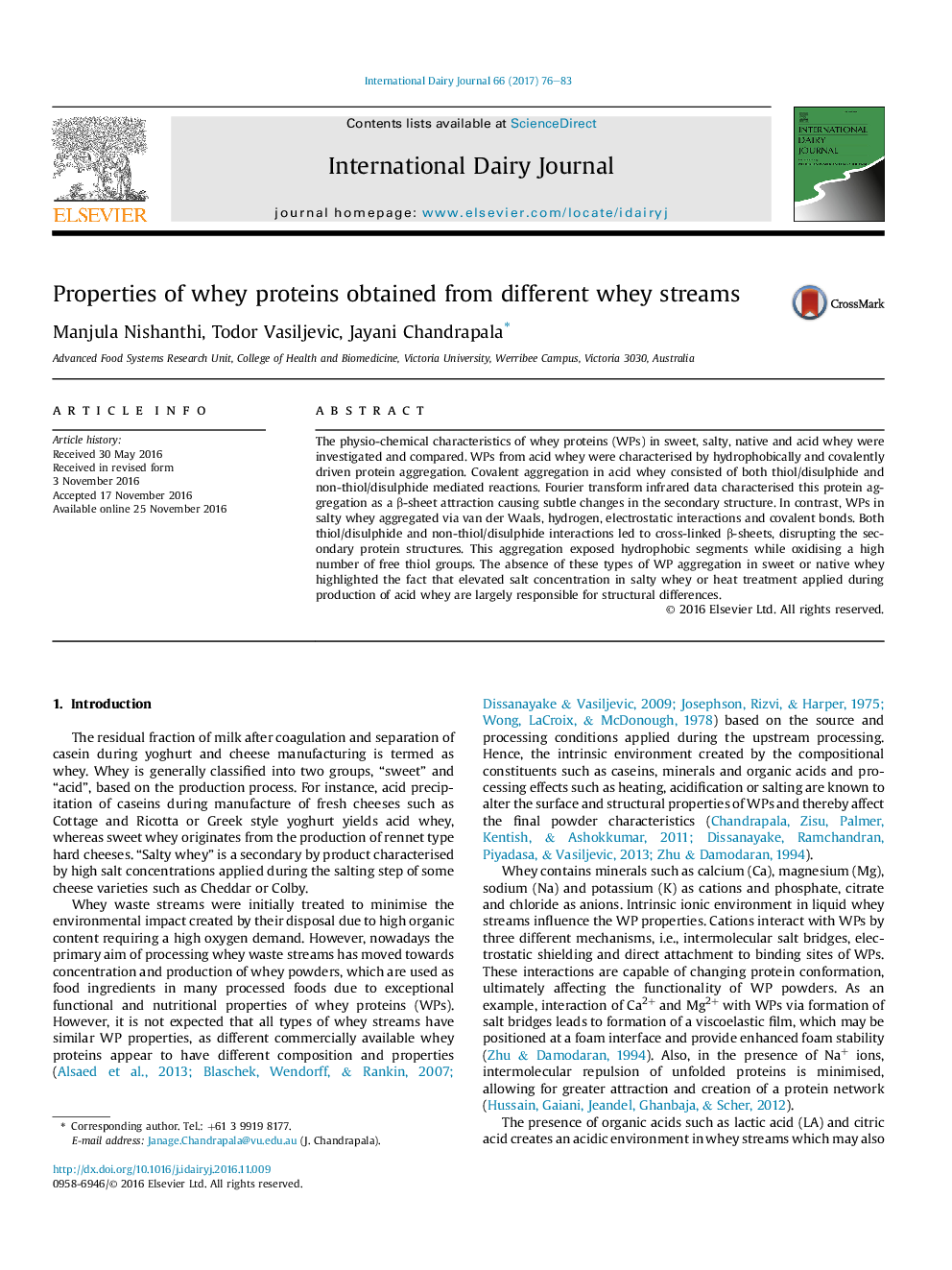| Article ID | Journal | Published Year | Pages | File Type |
|---|---|---|---|---|
| 5541203 | International Dairy Journal | 2017 | 8 Pages |
The physio-chemical characteristics of whey proteins (WPs) in sweet, salty, native and acid whey were investigated and compared. WPs from acid whey were characterised by hydrophobically and covalently driven protein aggregation. Covalent aggregation in acid whey consisted of both thiol/disulphide and non-thiol/disulphide mediated reactions. Fourier transform infrared data characterised this protein aggregation as a β-sheet attraction causing subtle changes in the secondary structure. In contrast, WPs in salty whey aggregated via van der Waals, hydrogen, electrostatic interactions and covalent bonds. Both thiol/disulphide and non-thiol/disulphide interactions led to cross-linked β-sheets, disrupting the secondary protein structures. This aggregation exposed hydrophobic segments while oxidising a high number of free thiol groups. The absence of these types of WP aggregation in sweet or native whey highlighted the fact that elevated salt concentration in salty whey or heat treatment applied during production of acid whey are largely responsible for structural differences.
